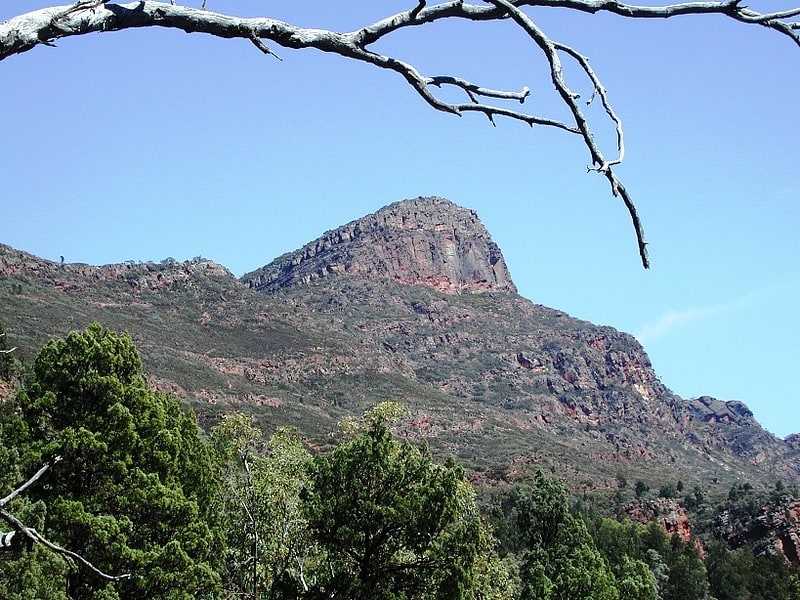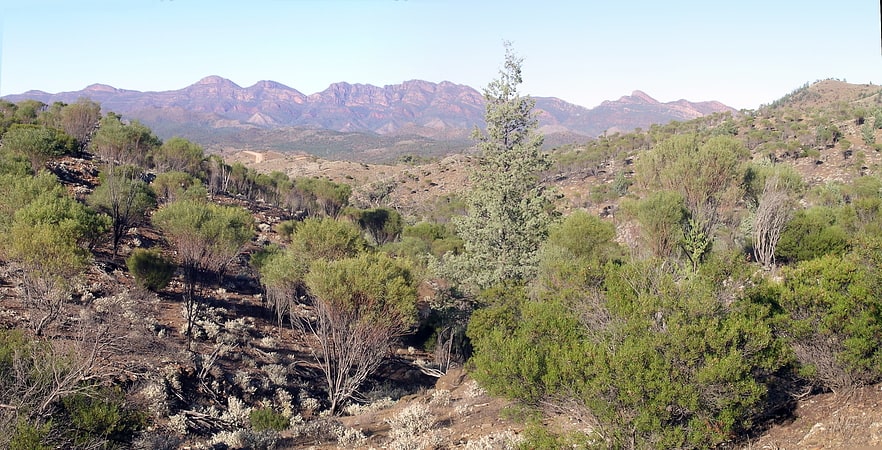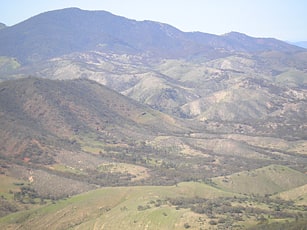Discover 5 hidden attractions, cool sights, and unusual things to do in Ikara-Flinders Ranges National Park (Australia). Don't miss out on these must-see attractions: St Mary Peak, Ediacaran, and Ikara-Flinders Ranges National Park. Also, be sure to include Flinders Ranges in your itinerary.
Below, you can find the list of the most amazing places you should visit in Ikara-Flinders Ranges National Park (South Australia).
Table of Contents
St Mary Peak

Mountain in Australia. St Mary Peak / Ngarri Mudlanha is a mountain located in the Australian state of South Australia on the northwestern side of Ikara. It is the highest peak in the Flinders Ranges and the eighth highest peak in South Australia, with a height of 1,189 metres. It is located within the Ikara–Flinders Ranges National Park and the gazetted locality of Flinders Ranges, South Australia. It was for a time known as "St Mary's Peak", but was renamed according to guidelines deprecating the use of names implying possession.
The Adnyamathanha people have expressed concern with tourists trekking to the peak as they regard it as a sacred place and not to be visited. However, the peak and its surroundings may be accessed via a walking trail from Wilpena Resort along the north-east edge of the range outside of Ikara, or via a longer trail through the middle of the pound.[1]
Address: Flinders Ranges, Ikara-Flinders Ranges National Park
Ediacaran

The Ediacaran Period is a geological period that spans 94 million years from the end of the Cryogenian Period 635 million years ago, to the beginning of the Cambrian Period 538.8 Mya. It marks the end of the Proterozoic Eon, and the beginning of the Phanerozoic Eon. It is named after the Ediacara Hills of South Australia.
The Ediacaran Period's status as an official geological period was ratified in 2004 by the International Union of Geological Sciences (IUGS), making it the first new geological period declared in 120 years. Although the period takes its name from the Ediacara Hills where geologist Reg Sprigg first discovered fossils of the eponymous Ediacaran biota in 1946, the type section is located in the bed of the Enorama Creek within Brachina Gorge in the Flinders Ranges of South Australia, at 31°19′53.8″S 138°38′0.1″E.[2]
Ikara-Flinders Ranges National Park

Mountain range in Australia. The Ikara–Flinders Ranges National Park, formerly Flinders Ranges National Park, is situated approximately 400 km north of Adelaide in the northern central part of South Australia's largest mountain range, the Flinders Ranges. The park covers an area of 912 km², northeast of the small town of Hawker. The Heysen Trail and Mawson Trails pass through the park.
The park's most characteristic landmark is Wilpena Pound, a large, sickle-shaped, natural amphitheatre covering nearly 80 km², containing the range's highest peak, St Mary Peak (1,170 metres). On 12 February 2016 the park was renamed to include the Adnyamathanha word, Ikara, "meeting place", referring to the traditional name for Wilpena Pound.
The park centre at Wilpena Pound is accessible by sealed road from Hawker. Other areas in the park can be reached by unsealed roads, which are mostly accessible by two-wheel drive vehicles except in bad weather or after heavy rain. There are many lookouts, scenic vistas, small canyons and unusual rock formations located in the park. These include Wilpena Pound, Wilkawillina Gorge, Hucks Lookout, Brachina Gorge, Bunyeroo Gorge and Arkaroo Rock. The park has some stone ruins from early European settlement and Aboriginal rock art sites. A rock formation called the Great Wall of China is located just outside the park. Camping is permitted at many locations in the park.
The park is managed by the National Parks and Wildlife Service South Australia, which is part of the Department for Environment and Water.[3]
Flinders Ranges

Mountain range in Australia. The Flinders Ranges are the largest mountain range in South Australia, which starts about 200 km north of Adelaide. The discontinuous ranges stretch for over 430 km from Port Pirie to Lake Callabonna. The Adnyamathanha people are the Aboriginal group who have inhabited the range for tens of thousands of years.
Its most characteristic landmark is Wilpena Pound/Ikara, a large, sickle-shaped, natural amphitheatre that covers 80 km2 (31 sq mi), and contains the range's highest peak, St Mary Peak (1,171 m (3,842 ft)) which adjoins the Ikara-Flinders Ranges National Park. The southern ranges are notable for the Pichi Richi heritage steam and diesel railway and Mount Remarkable National Park.
Several small areas in the ranges have protected area status. These include the Ikara-Flinders Ranges National Park near Wilpena Pound/Ikara, the Mount Remarkable National Park in the south near Melrose, the Arkaroola Protection Area in the north, The Dutchmans Stern Conservation Park west of Quorn, and the Mount Brown Conservation Park south of Quorn. The Heysen Trail and Mawson Trail run for several hundred kilometres along the ranges, providing scenic long distance routes for walkers, cyclists and horse-riders.[4]
Wilpena Pound

Wilpena Pound – also known by its Adnyamathanha name of Ikara, meaning "meeting place" – is a natural amphitheatre of mountains located 429 kilometres north of Adelaide, South Australia, Australia in the heart of the Ikara-Flinders Ranges National Park. It is accessible via a sealed road which continues on to the northern Flinders Ranges town of Blinman and to the south, Hawker.
Attempts at farming the Pound failed during the early 20th century. Following this, the tourism potential was recognised in 1945.[5]